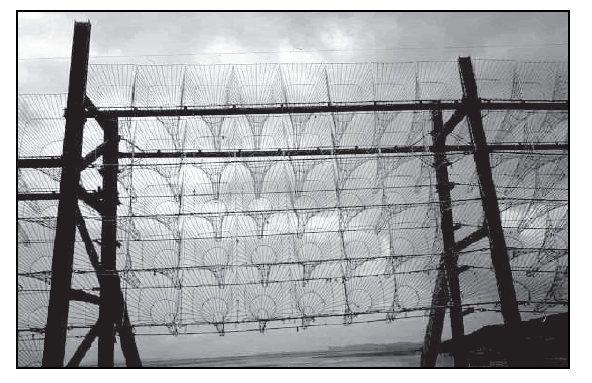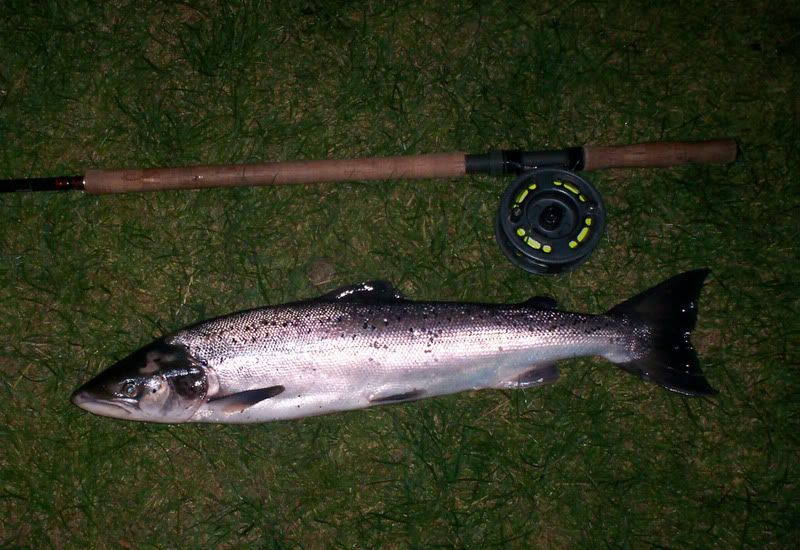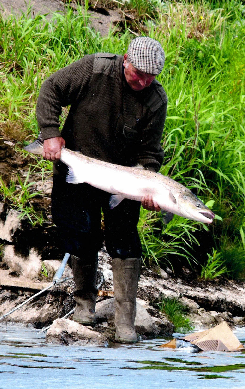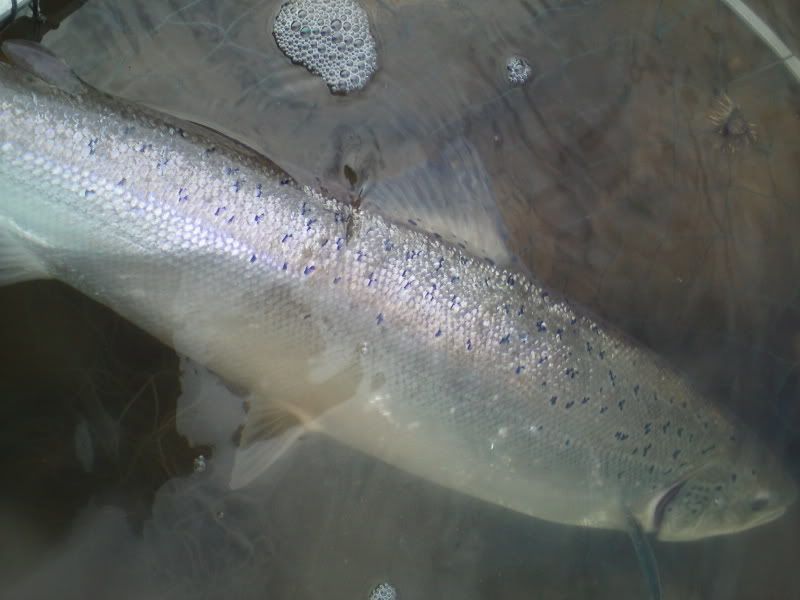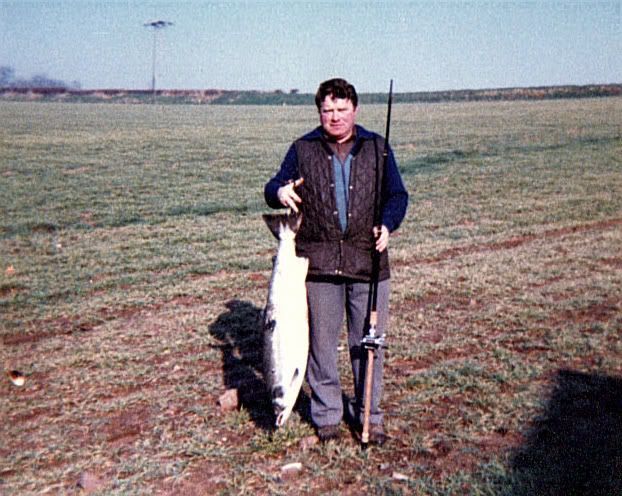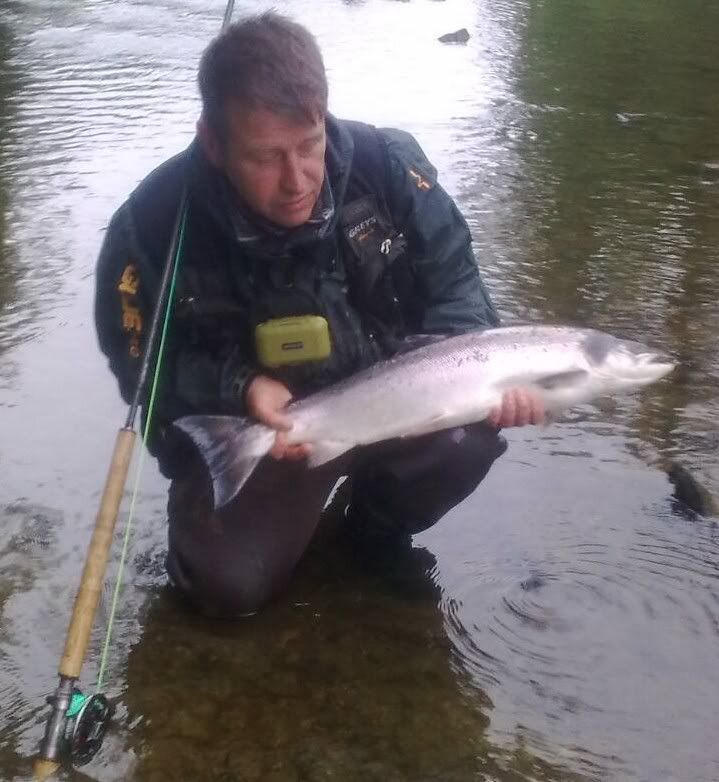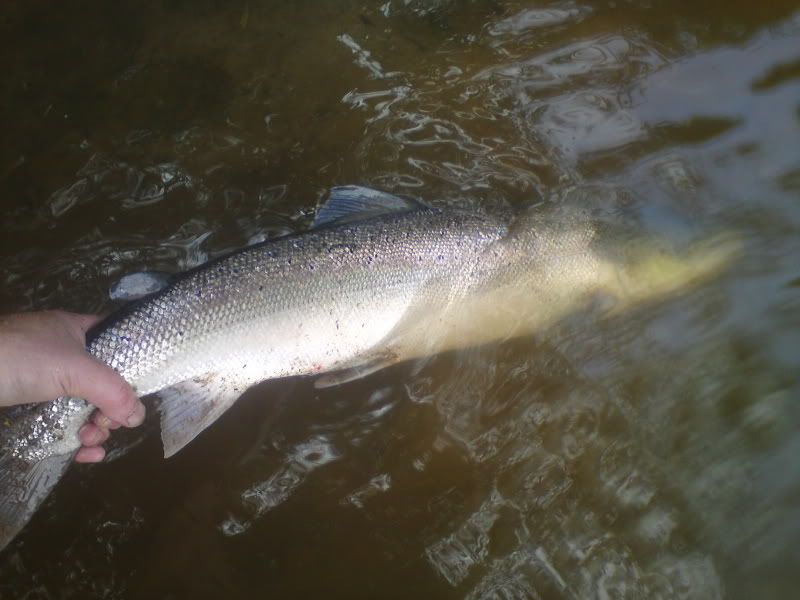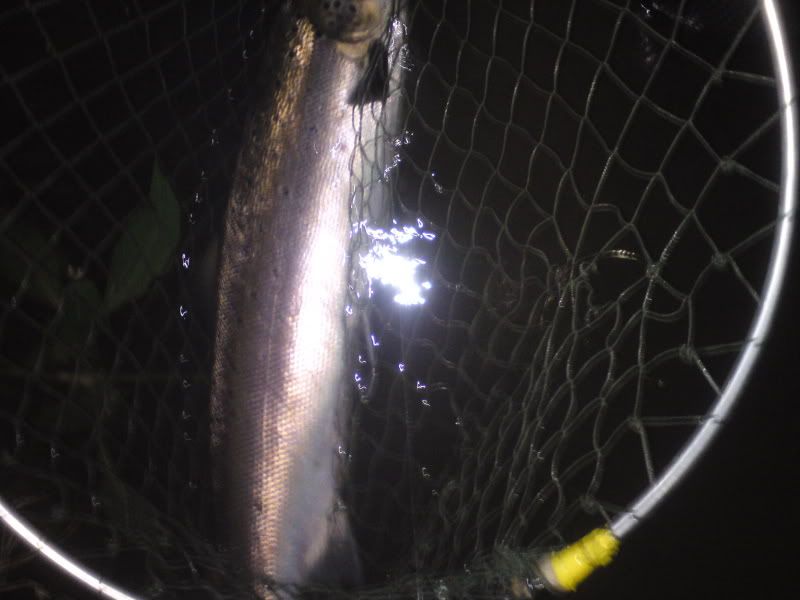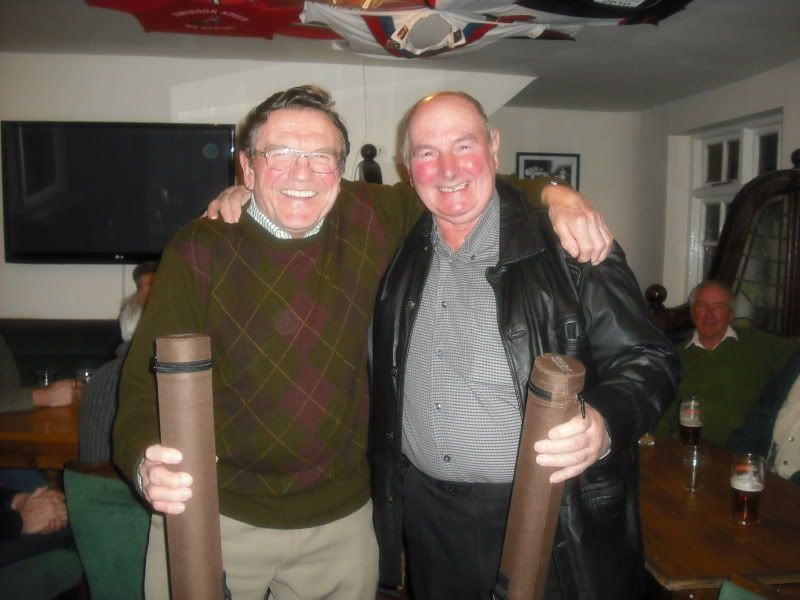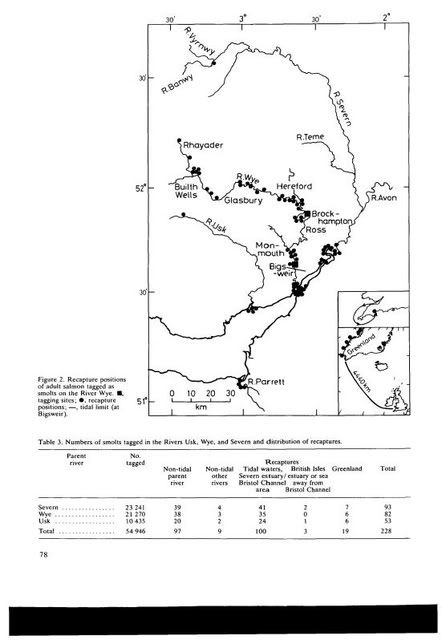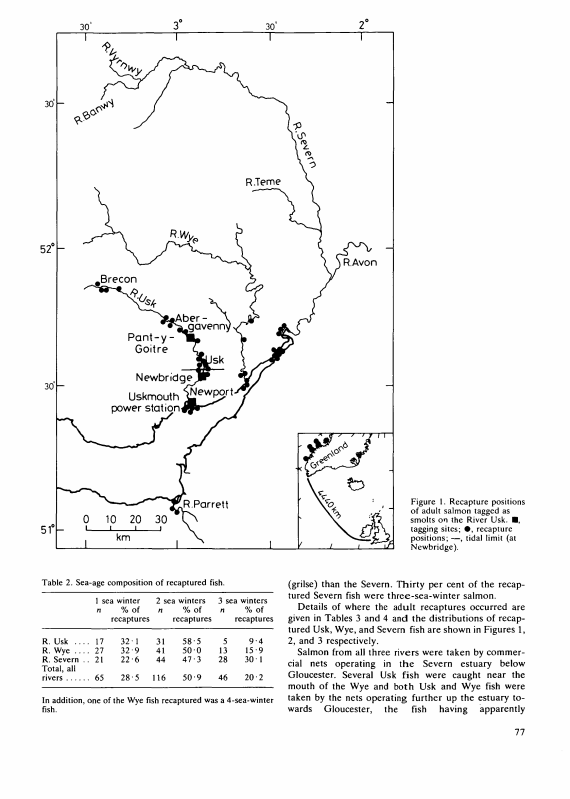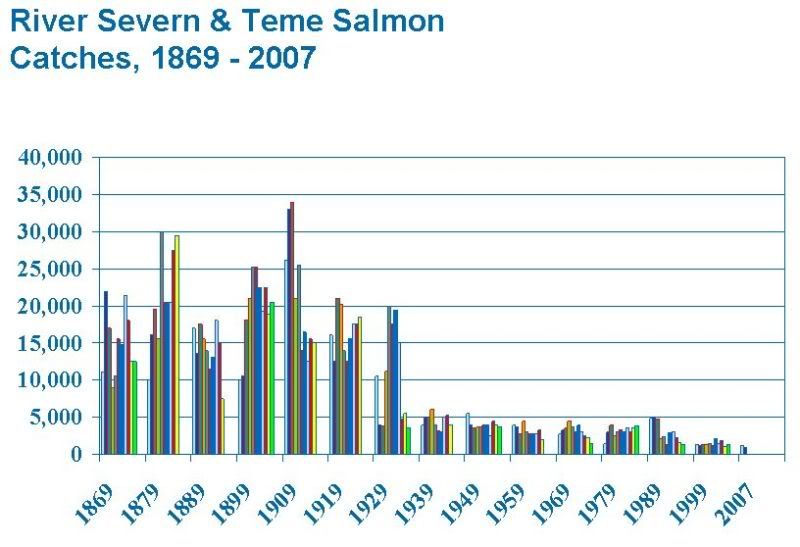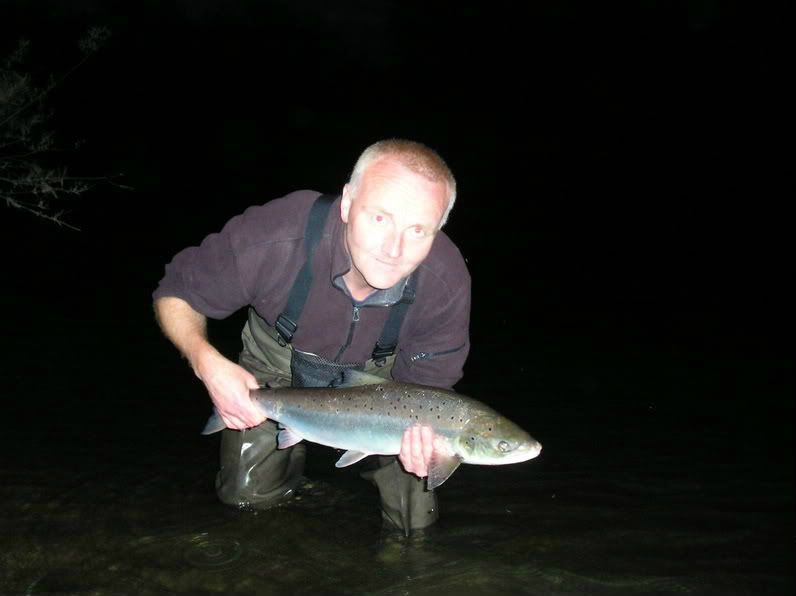Anglers being anglers exaggeration, gossip and plain untruth spreads as quickly in our ranks as do tales of fish caught or lost. The result is that most angling communities have a set of urban myths that are repeated so often that people believe them to be true. Severn salmon anglers are no different. Many of these myths come from the 'doom and gloomers', what I would call the grumpy faction, people who only seem to be happy when they've got something to moan about.
This is the second of a series of articles designed to debunk some of these myths by looking at the facts and coming up with a more balanced view.
‘With the putchers off we should be catching hundreds
more fish’
I’ve lost count of the number of times I’ve heard this particular pearl of wisdom from anglers on the Severn and Wye.
In my opinion this view is mistaken. In the short term the impact of a closed/severely reduced putcher fishery on the rod catch on the Severn, Usk and Wye is likely to be minimal.
Here are my reasons.
1. Low flows can force salmon to spend all summer and early autumn in the estuary
There is a mistaken assumption amongst anglers that all the fish available to the fixed engines in the estuaries will, if the putchers aren’t fishing, become available to the rod fishery.
This assumption is contradicted by research in to the movements of salmon in estuaries. According to the Atlantic Salmon Trust:
‘In the southern part of Britain, salmon that are delayed for more than about ten days within the estuary tend not to migrate into the river until the autumn[i].
Similar conclusions about fish being delayed in the estuary were drawn by J.W.Willis Bund Chair of the Severn board in the 19th century.
There is an old fisherman's saying that "Salmon only run well on a spring
tide," and no doubt it is on a spring tide that the largest run of fish occur; but there is also no doubt that every tide the fish run up the estuary a certain way, and fall back with the ebb. For the greater part of the year, — at some times much more than others, — the fish congregate in the estuary, and remain there. Some few work up each tide, but the majority wait for a fresh before they leave the estuary. ‘
It is this that makes the estuary (net) fisheries so valuable ; the fish remain there tide after tide, and the fishermen have ample time to take them, while, when the fish have started inland, they are moving upwards, and, unless caught when moving, have passed, and
are not met with again.’
‘The fish seem to congregate most in the estuary in the summer and early autumn. I say " seem," for the reason that the water-bailiffs find more fish stranded on the sands after each tide during those months than during any others. It may be that the fish equally congregate in the winter and spring, but that the higher land-water coming down at those times
makes them take the rivers more readily than during the summer and early autumn, when, the rivers being low, the fish hang about, and appear to congregate more in the estuary.’
‘It may also well be that in low water they do not care to face the pollutions through which they have to pass, and wait for a rise of the water before they try it. Whatever is the reason, there can be no doubt the fish hang about the estuaries for some time in the summer and autumn.’[ii]
2. Delayed migration into fresh water stresses salmon and can kill
The AST stress that the problem isn’t just that salmon stuck out in the estuary don’t get caught by the rod fishery – they may well die before they get a chance to return to the river and spawn.
‘Fish thus delayed may suffer significant losses, and half the stock may fail to enter the river at all in hot dry summers.
The problem of fatalities is particularly bad in southern Britain where summer low water temperatures over 20c will keep fish out in the estuary.
Further north there is less evidence of losses of salmon delayed in estuaries, suggesting perhaps that temperature is implicated in this phenomenon.’
‘Fish exhibiting these different migratory behaviours are likely to face very different threats from marine predators, and there may therefore be marked differences in the survival through this phase of their spawning migration.[iii]’
Malcolm Greenhalgh writing in Fly-Fishing and Fly-Tying has drawn out another aspect of the problems caused by delay entering fresh water:
‘In periods of drought... salmon will usually pass up the estuary with the tide and out again on the ebb. I have often seen this when I’ve been out with estuary netsmen... they fish when the tide is ebbing, and the bulk of their catch is of fish that have swum on the flood tide to the head of the estuary but have been caught in the net as they are heading out to sea (they hit the net on the upstream side).’
This is why nearly all the putcher ranks were set pointing upstream so as to catch fish dropping back on the ebb.
‘In a long drought those estuary-caught salmon have lost their silver sea-coat and taken on that pewter-grey that anglers would associate with a salmon that has been in the river for several weeks. Occasionally, I have seen a cock salmon, caught in an estuary net, that has started to gain its tartan breeding dress...’
‘When salmon are ready to run from the sea into the river they are under some physiological stress and the longer the drought when they are ready to run, the greater the mortality. ‘
‘When they are in the sea, the strong saltwater draws water from the body of the fish by the process called osmosis. To prevent death by dehydration the salmon drinks copious amounts of saltwater and excretes the salts from its gills and kidney. When in the river the system swings into reverse, for pure river water is absorbed into the body by osmosis putting the fish in danger of dying from over-hydration. So the salmon drinks little and excretes vast quantities of very dilute urine. Thus, if a salmon is switching its physiology from saline to fresh water environment but cannot swim up the river because the flow is too high or too low or temperature too high or too low. Its chances of surviving fall. The longer salmon are forced to wait in or off the river mouth, the higher the mortality.’
‘Anglers (and some fishery managers) enjoy imagining that, when a long summer drought comes to an end, those fish that have been held up in the estuary or out at sea will then run the river. Often they do not. Instead they will already have been devoured by crabs.’[iv]
3. Rod exploitation on the Severn is low
We can only make an educated guess about how many salmon run the Severn. The rough figure that I’ve heard from fishery specialists is somewhere between 10,000 and 15,000 fish. The counter and redd count figures from the Teme would seem to support this view[v].
A run at the bottom end of this scale would give a rod exploitation rate (including fish caught and released) of something like 3%.
Given that the average declared catch to the commercial putchers was around 800, and if we assume that roughly 50% (400) of that catch was of Severn fish (almost certainly an over-estimate)[vi]. We would be left with an increase in the Severn rod catch of just 12 fish. But that is without taking in to account the points made above about fish losses in the estuary. In reality the contribution to the Severn rod catch would be much less than this.
So what good does the putcher closure do?
Long term the closure of the putcher ranks as an industrial scale commercial operation (a small strictly limited heritage fishery remains) means that more salmon will return to the Severn Wye and Usk. This is enough reason to support it and no reason for whinging cynicism just because it hasn’t led to a massive boost to the rod catch.
The buy-out of the Welsh Dee nets cost £350,000 but like the Severn putcher closure it can't be shown to have directly boosted the rod catch in any substantial way. Though resenting giving money to the netsmen is perfectly understandable, anglers need to see the bigger picture. This is how the EA Wales explained the rationale behind the Dee buy-out, it applies to the Severn estuary too:
‘The ‘buy-out’ of the Dee net fishery by the Dee Fishery Association
(www.deefisheryassociation.org.uk) was finalised in 2008. The last of the
draft net fishermen operated in 2008, but net fishing ceased entirely in 2009
(Fig 3) and the fishery is now effectively closed for the foreseeable future. ‘
‘The absence of a net fishery on the Dee – with a declared catch in the
1990s of around 1,100 fish - does not mean that every year after the buyout
will see increased returns at Chester or better catches on the rods. This will
depend on the numbers of fish returning from the sea and a host of complex
and generally poorly understood factors affecting abundance and survival in
freshwater and marine environments. ‘
‘What the net buyout does mean is that a major source of loss of
returning adult fish has been removed (the net fishery caught and killed
around 17% of all Dee adult salmon returning to the estuary in the 1990s).
As a consequence, irrespective of how many adult fish return from the sea,
a significantly greater proportion should reach Chester and beyond because
of closure of the net fishery. This is the lasting legacy of the buyout and it
should mean that salmon (and sea trout) on the Dee are now better placed
to face future pressures (including the potential threats associated with
climate change) than they otherwise would have been.’[vii]
[ii] J.W.Willis Bund, Salmon Problems 1885.
[iv] Running Water By Malcolm Greenhalgh FF&FT June 2006
[vi] http://severnsalmon.blogspot.co.uk/2012/03/grumpys-myths-and-prejudices-number-1.html this article includes a discussion of the data from smolt tagging which suggests a smaller proportion of Severn fish in the putcher catch..
[vii] Dee stock assessment programme angler report 2009.
